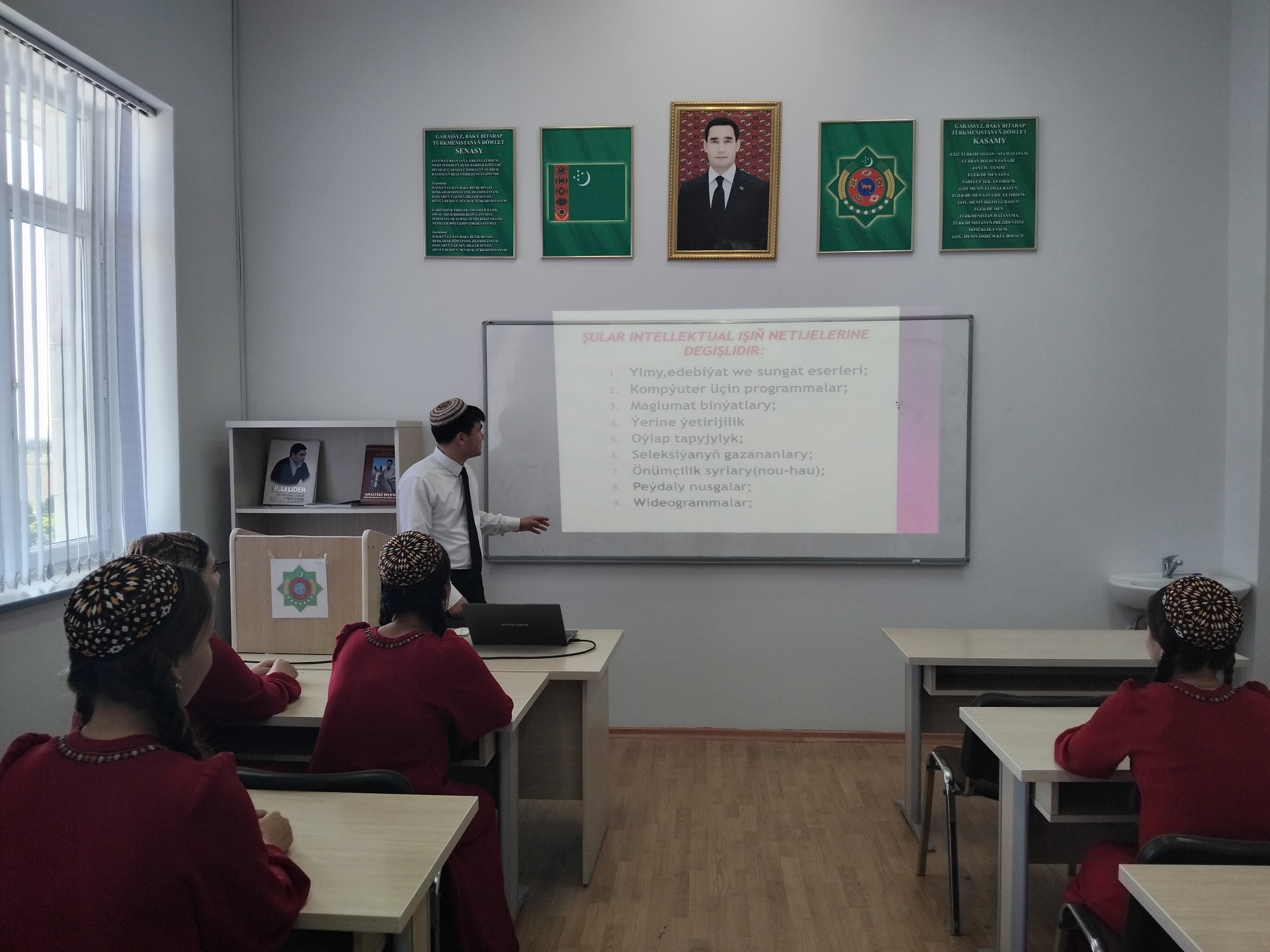
A scientific seminar on the history and development of intellectual property in achieving sustainable development goals was held
In the era of the Revival of the new era of the sovereign state, under the initiative of President, our country is developing and changing day by day.
A scientific seminar on the history and development of intellectual property in achieving the United Nations Sustainable Development Goals was held on May 7 by the scientific groups of students, organized by the Science Department of the Turkmen Agricultural Institute.
During the seminar, participating students made presentations on topics such as "Copyright", "Development of Copyright", "History and Development of Intellectual Property", and "History of Intellectual Development".
The scientific seminar on the history and development of intellectual property was held by the "Digital Economy" and “Qualified accountant” group of the Faculty of Veterinary Medicine.
Intellectual property refers to the rights that belong to the creations of the human mind, such as inventions, literary and artistic works, designs, and symbols, names, and images used in commerce. Although the concept and the laws that protect it do not go back to ancient times, the modern form has developed over the past few centuries.
The Creation of Modern Copyright and Patent Law: Statute of Anne (Great Britain, 1710): This law is often considered the beginning of modern copyright law. It first recognized the right of authors (as well as publishers) to control the publication of their works and set a fixed term for this right (initially 14 years, with the possibility of extension). The law also aimed to encourage public education.
French Revolution (late 18th century): In France, copyright and inventor´s rights began to be considered natural rights. That is, the author´s or inventor´s right to ownership of his or her own creation was considered an integral part of his or her personality.
Industrial Revolution (17th–19th centuries): During the Industrial Revolution, the importance of new technologies and inventions increased dramatically. This created the need for stronger and more standardized patent systems to protect inventions. The United States (1790), France, and other industrialized countries adopted or improved their patent laws. These laws were intended to encourage innovation by granting inventors the exclusive right to use their inventions for a specified period of time (usually 14–20 years).
In general, students who participated in the scientific seminar received answers to their questions about intellectual property, its history and current development.